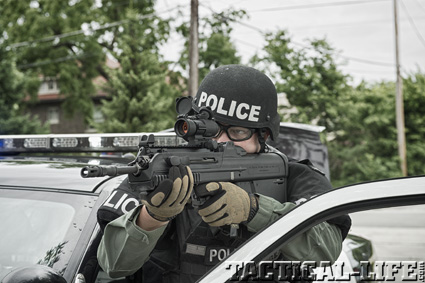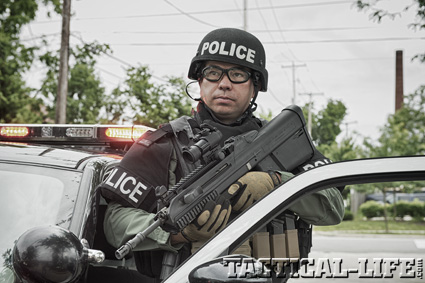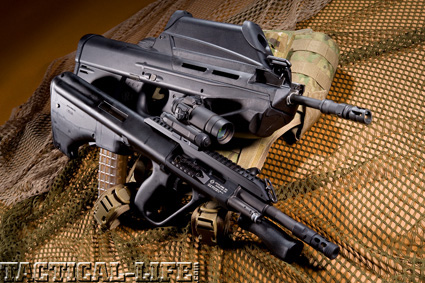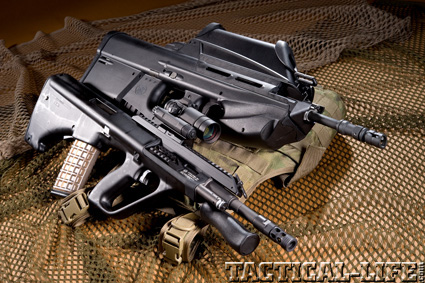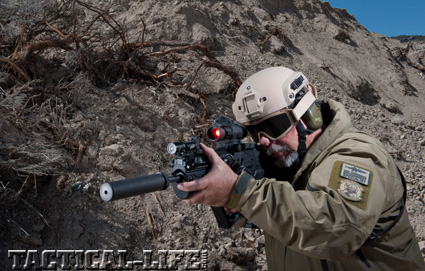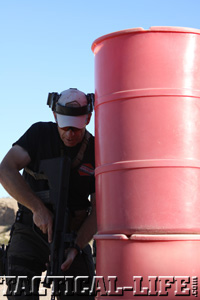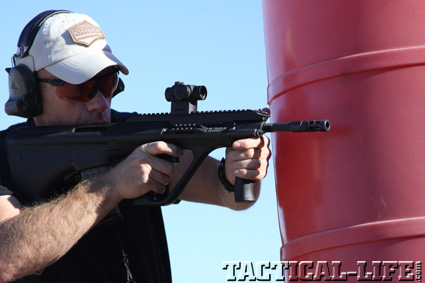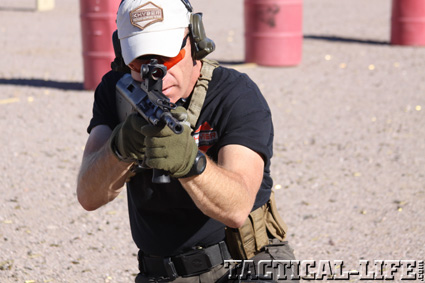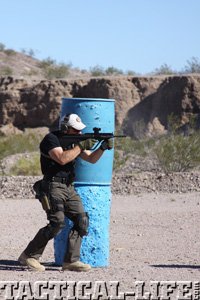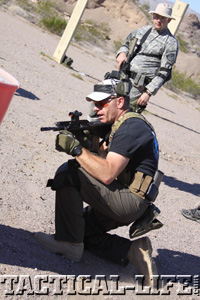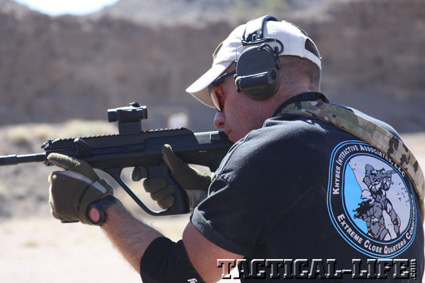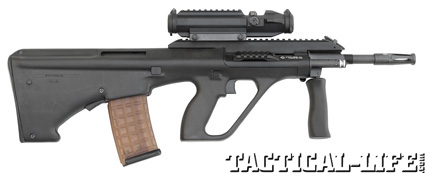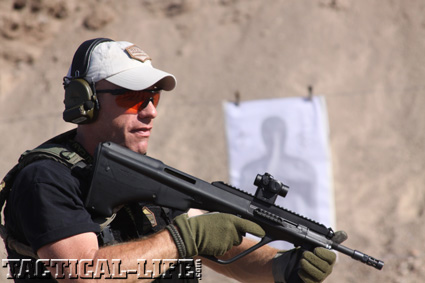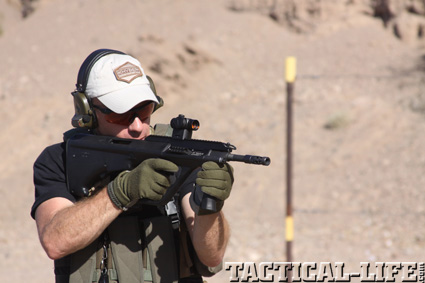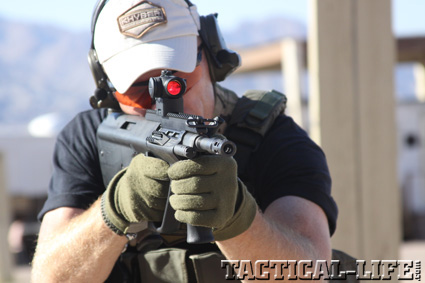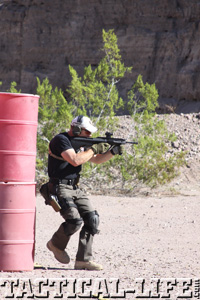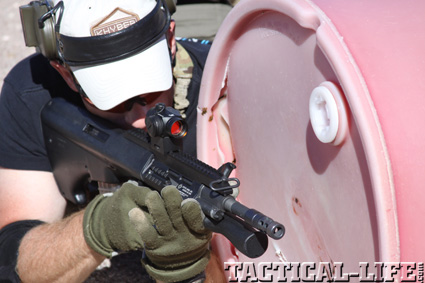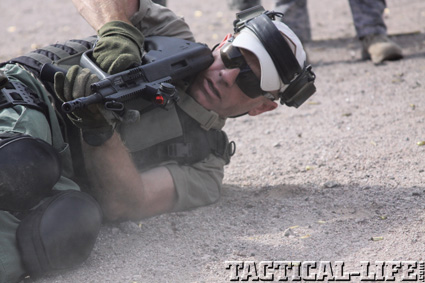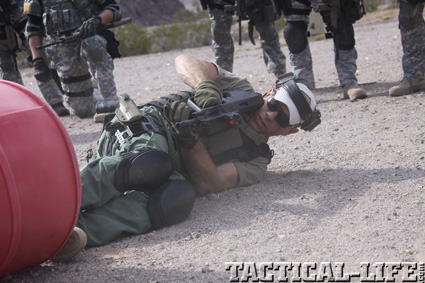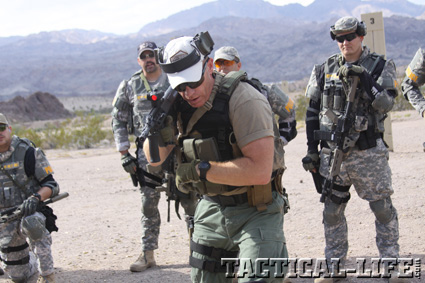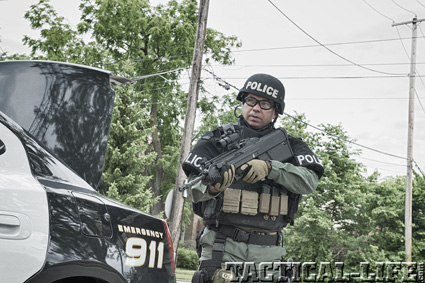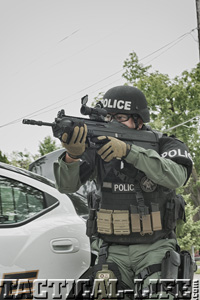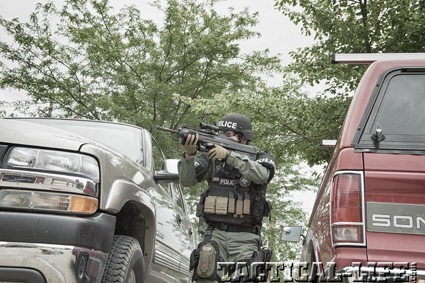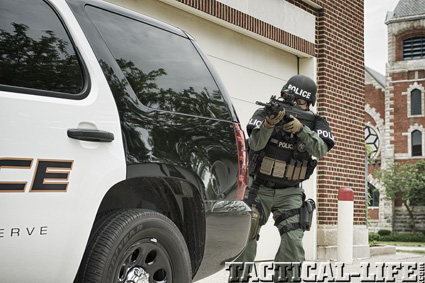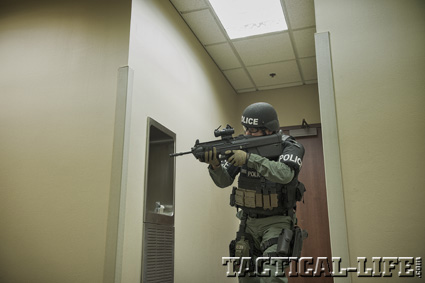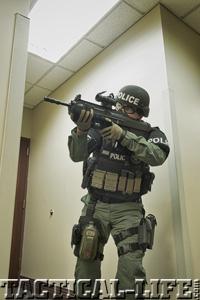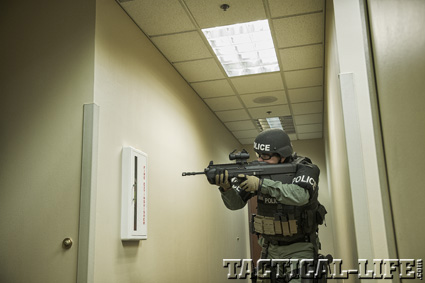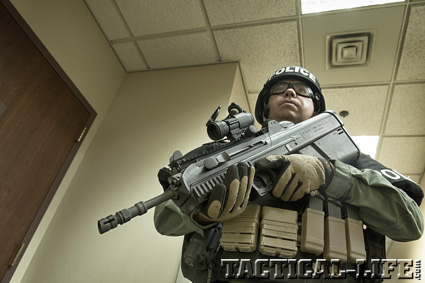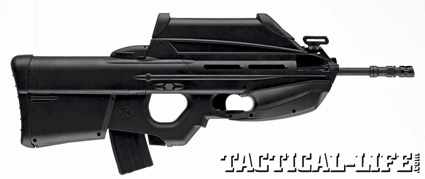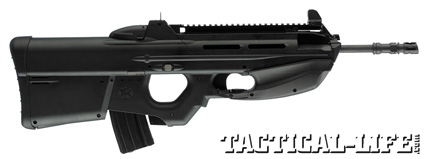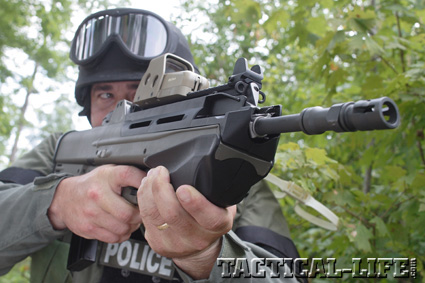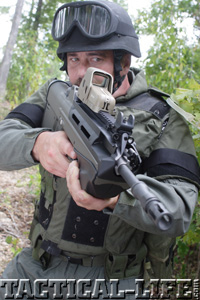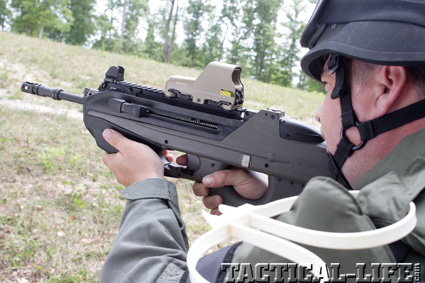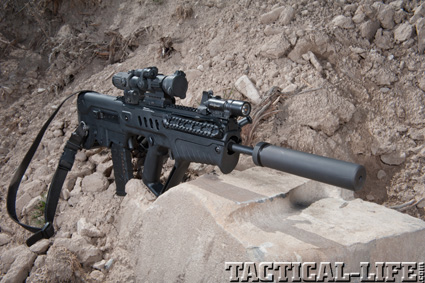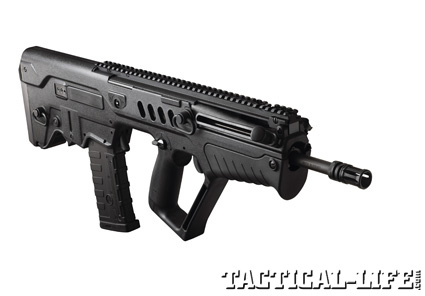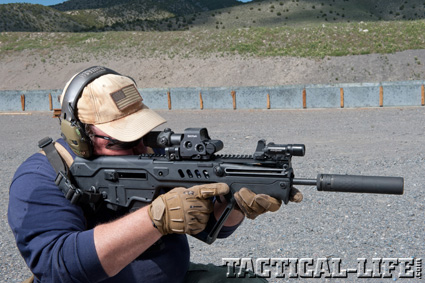FN introduced the 5.56mm FS2000, a semi-automatic version of the F2000, in 2006. Utilizing AR-type magazines, it is ambidextrous and can be configured with a rail or optics. The CQB model is set up nicely for the police market with a top rail, ambidextrous controls and a tri-rail forend. Its forward ejection is a favorite for many, making shooting from the off side easier. It is decidedly popular among those using bullpup rifles today, and it has developed quite the following.
Another 5.56mm bullpup worth considering is the Tavor SAR, which IWI US recently introduced for American operators. It features a top Picatinny rail, integrated iron sights, left-hand capability and drop-free magazines. It retains, however, the off-hand drawback of some bullpups, sending brass into your cheek if you are not careful. But the SAR also accepts AR-type magazines, letting operators use what’s in their existing inventory.
Also, there is the classic Steyr AUG. This iconic bullpup offers extreme performance in a compact package. Although the standard model feeds from proprietary mags that drop free, it does feature convertible operation for southpaw use.
Advertisement — Continue Reading Below
In the end, weapon systems like these have provided LE officers tremendous advantages for urban and CQB use.
Many Pros, Few Cons
One of the greatest advantages of a bullpup rifle is its shorter overall length while maintaining a standard-sized barrel. Short-barreled 5.56mm ARs are popular, but they can sometimes be problematic. They can be unreliable, loud and difficult to suppress. A bullpup with a 16-inch barrel is roughly the same overall length (or less) as a 10-inch-barreled AR minus the potential functioning issues. With the bullpup’s full-length barrel, terminal ballistics are better and operation is more reliable, even when users attach sound suppressors to the muzzle.
Advertisement — Continue Reading Below
Working in and out of cars, around barricades, and in any CQB environment is much easier with a bullpup. It’s much easier to clear around corners, stay behind cover and work in close proximity to team members. Bullpups allow you to “slice the pie” without a protruding barrel, keeping the rifle solidly in the pocket. They balance differently, which usually helps you aim faster and remain in that position with less fatigue. Going “hands on,” you can move the rifle to the rear without having anything hanging down around your knees. Slung tightly against your back or chest, a bullpup will remain out of the way for climbing. Moving to kneeling or prone is simpler, too, with less chance of burying your barrel in the dirt.
The bullpup design also means you’re closer to the controls. These guns work better for me, whether I’m wearing a plate carrier or not, given my short arms. Storing bullpups in a bag or vehicle requires less space, allowing you to use non-tactical bags for greater concealment.
With each design evolution, the drawbacks diminish, but bullpups do have a couple of disadvantages. Their triggers remain heavy by comparison, so repeat shots are nowhere near as rapid as those from an AR. With the exception of the FS2000, shooting from the opposite side can also be problematic. They’ll run just fine, but you need to be carful about where you put your cheek. Bullpups can also be heavy compared to some ARs, and those taking proprietary magazines are rare these days, but you also need to make sure your AR magazines work, as not all do. Lastly, bullpups are different. Cops don’t like different, and trainers like it even less. You will need to alter your training a bit, and that can be irksome.
Advertisement — Continue Reading Below
Tips & Tricks
The most critical tip is not to treat a bullpup like a funky AR—it is a completely different rifle. Current designs are either European or Israeli, with “their” application in mind. Drop-free magazines are not universally liked, and in some cases, they’re even panned outside of America. For example, these builders generally don’t want soldiers leaving magazines all over the battlefield. The same is true for the bolt holding open on the last round. Although the FS2000, the Tavor and the AUG feature this, many builders outside America purposely avoid this feature. If you have a rifle with this feature, you will need to develop reloads (tactical or otherwise) around this method. Charging handles are at the front, so the entire process is different. For the most part, you will remove the empty or partially loaded magazine, insert a new one, and run the bolt.
Bringing the gun into your “workspace” is all the rage these days. For me, that can be more problematic with a bullpup. It can certainly be done, but it is faster and more positive for me to keep it in the pocket. The tendency is to push the bullpup forward, out of the pocket, placing the magazine well where your ARs would be, and that won’t work. If you are going to rotate it upward, do just that. Rotate it 90 degrees, do what you need, and rotate it back. This requires that you work closer to your body. You really have to focus on keeping your head up and in the fight. The same is true for malfunction drills, but honestly the charging handle makes these far easier to clear than does the AR platform. With practice, it is generally faster for me.
Advertisement — Continue Reading Below
Another tactic popular these days is extending the off-hand grip as far forward as possible on a rifle. This isn’t going to work with the bullpup. You can certainly maintain a “thumbs forward” attitude, but reaching over the top will be problematic. Never truly subscribing to that method, it hasn’t been an issue for me, but the “tacti-cool” crowd will need to adjust. Pistol grips work, and some bullpups like the AUG come with them, but a more traditional hold will work best depending on the rifle.
Spend some time getting on target and moving to multiple threats. The balance is different, with most of the weight positioned to the rear. For me it is faster; for others it takes some work. The arc of the barrel is smaller so you can overshoot the target. Find a solid reference point on your cheek and hit it every time. Overall, bullpups move less under recoil. Also, if you use a respirator, spend some time with it, as aiming is different. Another tip is to use a forward-mounted red dot. I’m not sure I would deploy without one—they really shine here.
Ready for Harm’s Way
Advertisement — Continue Reading Below
Lastly, spend some time with a bullpup before you come to any real conclusions, especially if you have been running an AR for a long time. Most everything you do will be different, requiring some transition training. If the move is made for you, spend some real time on the system before going into harm’s way and work with it exclusively for quite some time. You really need to pattern the operation, and that will not happen overnight.
Bullpup rifles are not for everyone, but for some, they are perfect. It has taken me some time, but this platform is quickly becoming my favorite choice for a 5.56mm carbine. For me, what differences exist are far outweighed by the strengths. As a deployment rifle in an urban environment, they are excellent. The key to making the transition is an open mind and training time. Operators all over the world are fielding bullpup designs to great effect. Given some time and training, you can easily do the same!
